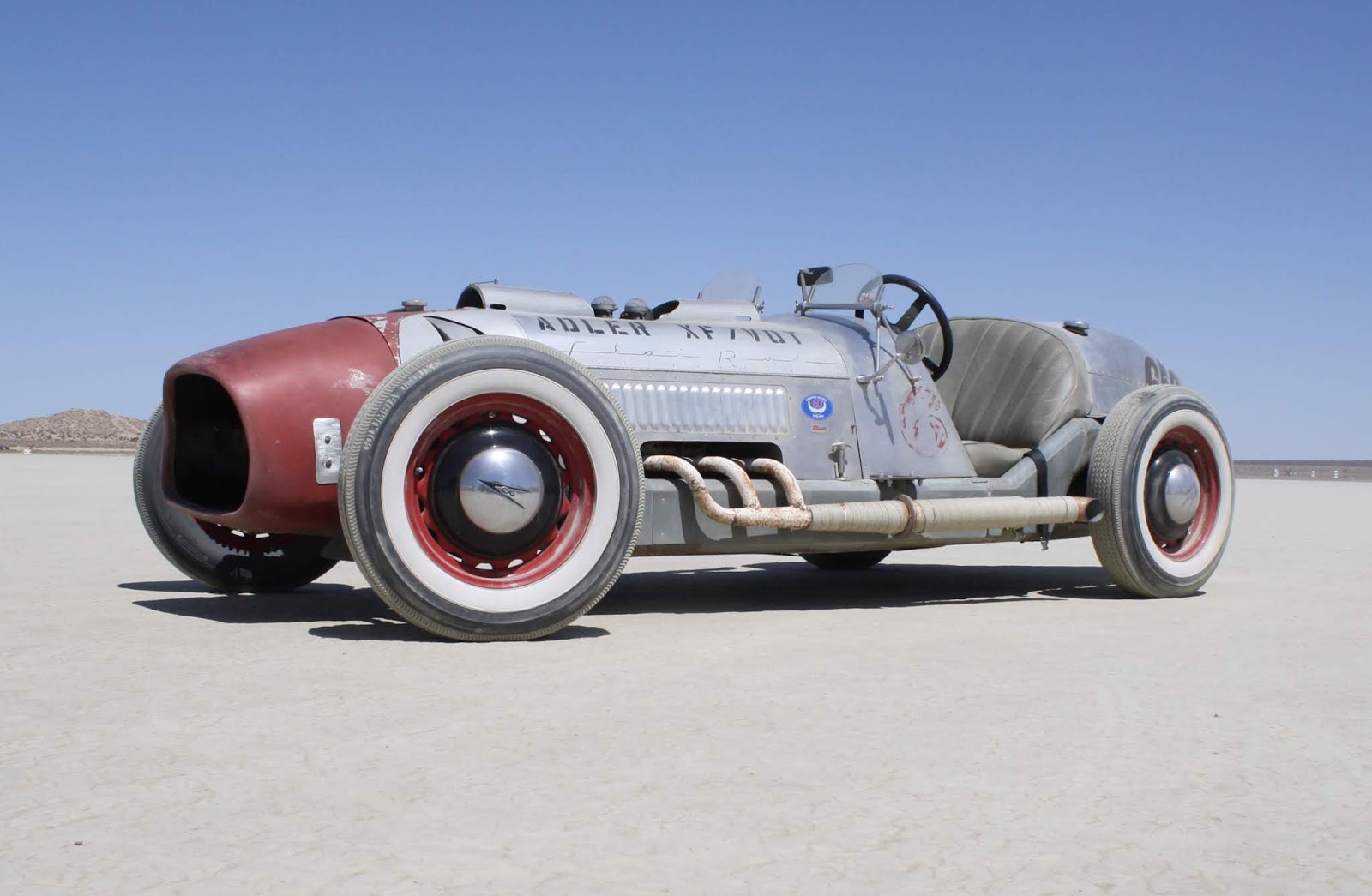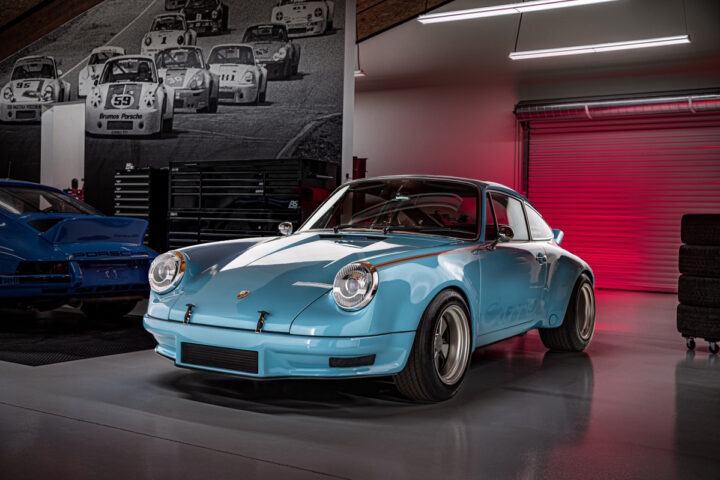El Mirage is one of those magical places, just a little more than an hour north of Los Angeles in the high desert; it’s a raw dirty landscape, which for the most part is devoid of life. However, six times a year it becomes a Mecca of Speed as Land Speed Racers from around the South West come to test their cars and set new records. Not just a precursor to the Land Speed Races at Bonneville, El Mirage has its own rich history of land speed racing, with speeds over 300 MPH being reached multiple times. Since 1937 the Southern California Timing Association has been organizing land speed trials on the lonely lakebed, for those six days a year, the silence of the desert is broken.
I head up to the events to photograph the cars, teams, and racers, many of them that look just like they would have back in the ’30s and ’40s if it was not for the modern-day RV’s and safety equipment you could believe you stepped back into another time. On the same day, you will see
an ultra-sleek modern land speed record car and a 1932 Ford racing in their class, chasing speed records.
It was on one of those trips that this unique car captured my attention, a strange Mercury-powered Boattail roadster that was parked near the staging lanes. Unlike some of the hotrods out at the lake, the patina on this car was real as was the garage-built masterwork that made it so interesting. The body was hand-formed and riveted together, the cockpit was all business and even included a vintage tool bag, and stickers from races 50+ years ago decorated the interior panels. I checked back often to try and meet the driver of this car, but no one ever turned up, so I shot a series of photographs of the car and hoped to find out more later on.
Thankfully the Southern California Hot Rod Community is a small one and after a few days of hunting around online and making a few calls, I found someone who knew the owner. The story of the Adler Special unfolded in an email exchange over the course of a few days. It was an interesting tale of a time when a guy in his garage could build a car and go out to the track and race against the factory.
The car now known as the Adler Special was purchased by Doug Adler from Mr. Jaques Bellesiles who campaigned the car back in the early fifties. Mr. Bellesiles’ car started life as the Manning Mercury. Built on a Manning 3” tube chassis the car was raced by Chuck Manning himself from 1951-1953 in the SCCA. Chuck was well known for his chassis in Southern California road racing circles and even produced and sold plans for his chassis via mail order. You could find ads for Manning Chassis published in Road & Track magazine in the 1950s.
Manning Chassis were so good because Chuck worked for Douglas Aircraft as a stress analyst and knew how to design a low weight, yet surprisingly stiff chassis. The tubes were fitted with 1936 Ford
suspension components and body was formed by hand out of fiberglass and aluminum using wooden forms and lots of trial and error. Powered came from a Mercury Flathead V8 topped with dual Stromberg carburetors and a manual gearbox. The car was ready to race and race it did.
The Manning Mercury was purpose-built to race, so it does not have the comforts of even a 1950’s car. it does not even have a key. The car has been retrofitted with a hidden key system for security today, but when Chuck was building it in 1951 he kept it all business. The shifter shows just how far back the driver sits in the chassis, for better weight distribution. With Manning at the wheel, the car took home five podium finishes in 1952 alone. Mr. Bellesiles acquired the car in 19 hit 128 mph at Bonneville and was a regular at tracks like Laguna Seca, Torrey Pines, and even took First Place at Willow Springs in 1956.
The car’s current owner Doug Adler discovered it in 2006 through a mutual friend of Mr. Bellesiles who still owned the car after all these years. The car was taken apart and stored in the rafters of
his garage since the 1970s. After lots of asking and promising that he would keep the car original Doug was able to purchase the car, once getting it down from the rafters Mr. Bellesiles had two more requests, firstly that he gets to help put the car back together, and second that he gets to drive it once it was done. After reassembly, the car was back on the road and 80+ years old Mr. Bellesiles was able to take his home-built hot rod for a drive once again.
I was thrilled to have his input as I put the car back together, you can’t ask for a better expert than the guy that built it.
Doug has big plans for the car including several vintage rallies and races. He won’t be doing any serious racing in it, since that would require modifying the original car with modern safety devices, as much as we would like to see it on the track, keeping this survivor Hot Rod Culture original
seems to be the right thing to do.


























